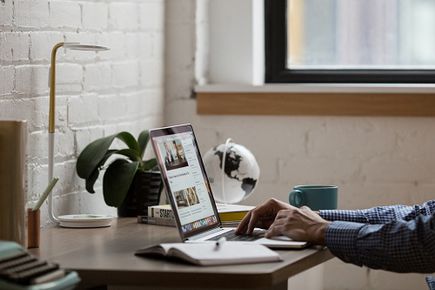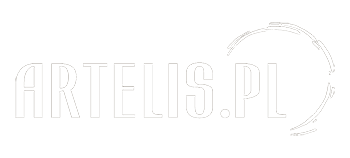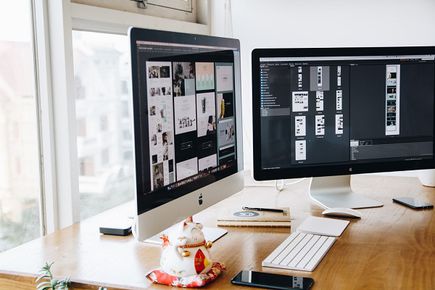
Badly designed navigation on the site
The secret to good navigation on the site is in a user-friendly design. What does it mean? That your users’ journey is smooth, intuitive and problem-free. A good navigation on the website gives the user the opportunity to find the information sought as quickly as possible. There is even a theory that it should be done in no more than 3 mouse clicks. The user-friendly design of navigation on the page is, for example:
-
a navigation bar that shows the user wherein the site he is currently located,
-
a clear main menu, which contains no more than 5-7 items,
-
the intuitive arrangement of elements on the page (e.g. company logo in the upper right corner of the page, and contact to the company in the footer).
Remember that the user-friendly design of navigation on your page deepens the user's visit and reduces the bounce rate. And vice versa – if you make it difficult for users to navigate the site, they will not have mercy and will leave the site.
No responsive web design version of your page
In times of mobile frenzy, responsive web design is a must. Smartphones and tablets displace computers to the extent that we already make online shopping via them. Thanks to the responsive web design, you can be sure that your website will display correctly on every device your users use. So, your audience can visit the website anytime and anywhere.
Poor quality of content and images on the site
The content on the website is not only well-chosen graphics, but also content matched to the target group. If your content is of poor quality, written boringly and with errors, users will lose confidence in your brand. And the website ceases to have a substantive value for them.
Plan the content on your website to be consistent, tailored to the target group, and free from errors. It is also important to format the texts well – internauts do not read linearly, but digitally. So make sure to use:
-
headings,
-
bolds,
-
lists,
-
frames,
-
tables,
-
or infographics in the texts.
These elements will allow users to quickly scan content.
Take the time to find the right photos – make sure they are of good quality. If you do not have the option to add unique photos to your website, buy them on the Internet. However, watch out for free photos from stock – if they are of poor quality, for example, low-resolution or unmatched to the content, the user will notice it in the blink of an eye and consider you unprofessional.
Forgetting about website optimization
Do not forget about optimizing your website. What is it about? For example:
-
Place keywords in your content that you want to appear in Google search results.
-
Compress images so that your page loads faster.
-
For the same purpose, you can, for example, remove the surplus of code on your website.
-
Format content using hierarchical headings (h1, h2, h3).
-
Describe the pictures with alternative texts.
-
Add an SSL certificate to your website.
The above activities, as well as other similar ones, are used not only for the sake of user-friendly design. It is also an optimization that Google appreciates, placing your site in higher positions.
The anonymity of the website owner
You must be reliable for your users. The audience needs to know who you are. Create a contact page through which users will be able to:
-
contact you,
-
view your location on the map,
-
check your contact details,
-
get to know other customers' opinions about you,
-
or browse the FAQ tab.






